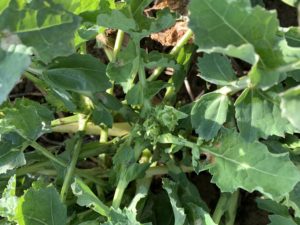With crop prices on the rise, protecting valuable oilseed rape crops this spring is worth paying attention for…
Posted on 12 March 2022
“With oilseed rape at the start of March now approaching £700/tonne, protecting crops adequately this spring against key foliar diseases is important to protect and maximise profit margins.” says Will Ridgwell, Clayton Plant Protection.
With good autumn conditions leading to successful early crop establishment, most areas of winter oilseed rape have fared reasonably well against Cabbage stem flea beetle damage in the main this season, though pigeon damage has been very evident and widespread over winter causing very variable growth. Following a relatively mild winter, crop growth in areas that escaped pigeon damage has been good; and in those very forward winter crops, canopy size may need managing this spring as temperatures increase, to reduce lodging risk and to open up the canopy.
Keeping a close watch on any Light leaf spot outbreaks in your region will be increasingly important in the weeks ahead to aid early disease detection and control measures before control becomes more difficult as visible symptoms start to become more apparent. Remember to consider all crops as even varieties with greater resistance ratings can still be significantly affected. Growers targeting Light leaf spot or Phoma infections can ensure canopy management is factored in at the same time by using a treatment combining a suitable fungicide with a plant growth regulator to help even up variable crops.
Planning your fungicide choice well this spring will be vital. Both prothioconazole and tebuconazole offer good follow-up spray options in early spring for Light leaf spot. Products such as Clayton Navaro®, Clayton Trellis®, Clayton Tuskar® and Clayton Tebucon®250EW provide growers a good choice of straight and co-formulated options for these triazole actives. Whilst Metfin 90™ containing metconazole also offers growers a useful added growth regulatory effect for reducing crop height for any very forward crops.
